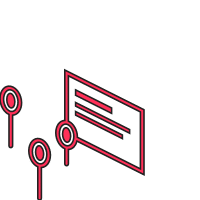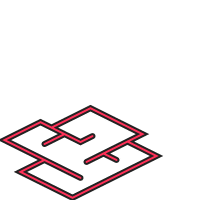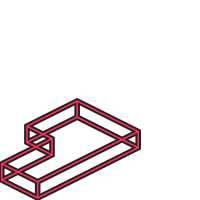What is a digital twin technology
Digital Twin asset digitisation is a virtual model of a physical object and space. It spans the object’s lifecycle and uses real-time data sent from IoT sensors to simulate the behaviour and monitor operations. Digital twins can replicate many real-world items, from single pieces of equipment in a factory to full installations, such as manufacturing plants and even entire cities. In summary, digital twin technology allows you to oversee the performance of an asset, identify potential faults, and make better-informed decisions about maintenance and lifecycle.
- Digital twin asset digitisation used in pre-construction
What are the benefits of digital twins?
Decrease travel time by
53%
and cut costs by removing the need for site visits.
Reduce time on site by
70%
through virtual site inspection and coordination
Training effectiveness up
30%
versus in-person or paper-based training.
Cut carbon emissions by
13%
by greatly reducing the need for travel.
Digital twins offer users many benefits. We’ll unpack some of the following.
IMPROVED PERFORMANCE
Real-time information and insights provided by digital twins let you optimize the performance of your equipment, plant, or facilities. Issues can be dealt with as they occur, ensuring systems work at their peak and reduce downtime.
PREDICTIVE CAPABILITIES
Digital twin asset digitisation can offer you a complete visual and digital view of your manufacturing plant, commercial building, or facility even if it is made up of thousands of pieces of equipment. Smart sensors monitor the output of every component, flagging issues or faults as they happen. You can take action at the first sign of problems rather than waiting until equipment completely breaks down.
REMOTE MONITORING
The virtual nature of digital twins means you can remotely monitor and control facilities. Remote monitoring also means fewer people have to check on potentially dangerous industrial equipment.
What industries use digital twins?
Digital twin asset digitisation is used across many different industries and sectors, especially in construction and larger manufacturing spaces, but also in healthcare and other less likely places.
Construction
We work with construction teams to create immersive 360 digital twins at various stages of the build to better plan residential, commercial, and infrastructure projects while providing a real-time picture of how existing projects are progressing. Architects also use digital twins as part of their project planning by combining 3D modelling of buildings with digital twin technology. Commercial building managers use digital twins further to convert their physical world into a smart building, monitoring live and historical temperature, occupancy, and air-quality data within rooms and open spaces to improve occupant comfort.
Manufacturing
Digital twins are used across the manufacturing lifecycle, from designing and planning to maintaining existing facilities. A digital twin prototype allows you to monitor your equipment at all times and analyse performance data that shows how a particular part or the entirety of your plant is functioning.
Energy
Digital twins are widely used in the energy sector to support strategic project planning and optimise the performance and lifecycles of existing assets, such as offshore installations, refining facilities, wind farms, and solar projects.
Automotive
The automotive industry uses digital twin asset digitisation to create digital models of retail showrooms and the manufacturing spaces. Immersive 360 virtual tours of these very large spaces, allow plant and showroom managers to quickly locate machinery and components for further insights. It is another area where predictive maintenance is valuable because a digital twin can alert a service centre or user when it finds an issue with component performance.
Healthcare
Digital twins are used in the healthcare industry for several instances. These include building virtual twins of entire hospitals, other healthcare facilities and labs, creating indoor wayfinding for patients to quickly navigate around these large spaces.
Capturing as-built constructions
- Create 3D walk-throughs and virtually take anyone immediately to a site or location.
- Generate OBJ files and point clouds for as-builts and construction documentation.
- Export your point cloud into ReCap® or Revit®
- Perform remote inspections, measure while offsite, and reduce site visits by capturing all data the first time.
- Communicate key milestones quickly and effectively by eliminating travel time and by sharing and annotating in the model to get sign offs.
- Replace thousands of photos by capturing all imagery and data at once, and save time by eliminating the need to document, arrange, and label photos.
- Get reflected ceiling plan images and schematic floor plans.
- Capture spaces that are accurate within 1% and 0.1% with Leica BLK360.

MATTERTAG HOTSPOTS
Embedded annotations and media in your digital twin to highlight key features of your space.

SCHEMATIC FLOOR PLANS
Generated schematic floor plans of your space throughout the virtual tour.

MEASUREMENTS
Measure any aspect of your space, such as walls, windows, machinery, and more.

DIGITAL ASSETS
A bundle of digital assets you can download, edit, and import into 3rd party programs.
- Digital twin asset digitisation used in a large gas plant







